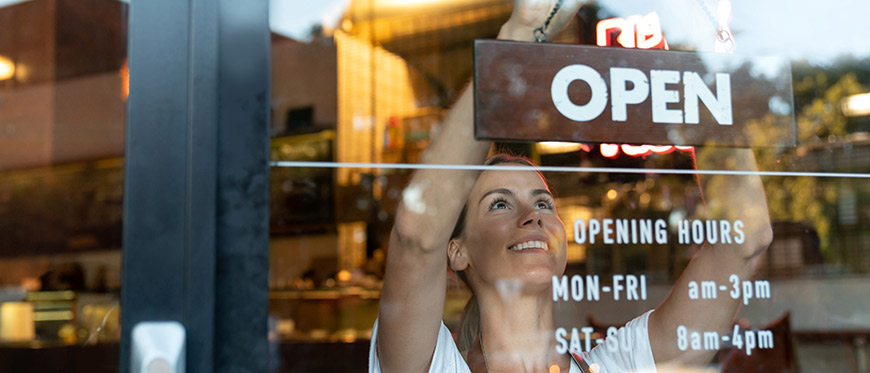The consumer appetite for restaurant sustainability just keeps growing, and is now to the point where eight out of ten people want their favorite bar or bistro to operate on a sustainable basis. This expectation is particularly strong among Millennials and Gen Z consumers, making the issue a key factor in the future of foodservice. So, how exactly can you serve up a restaurant experience that satisfies your eco-conscious customers, but also fits your bottom line needs?
Take five simple steps toward a more sustainable restaurant
The task can seem a daunting addition to any restauranteur’s already considerable “to do” list. Fortunately, a new report, “Reach for the Stars: How to make your restaurant more sustainable” spells out five practical ways virtually any foodservice operation can help sustain both the environment and its own business.
1. Change to sustainable alternatives
The simplest place to start is with your purchasing. Consider a switch to packaging and paper items that are not only eco-friendly but also have the third-party certifications, and labeling, to prove it.
Beyond the consumer-facing consumables like paper goods, invest in smarter products that generate less waste or consume less energy. For instance sourcing from local growers can reduce the need for packaging and the Co2 emissions associated with long-distance transport. And replacing those standard light bulbs with the latest generation of energy-saving, soft-light LEDs can cut down electricity consumption and costs.
2. Invest in recycling stations
Install recycling stations in the front and back of the house, to make it easy for customers and staff to use them. Rather than hide these stations away, draw attention to them, brand them – make them fun if your brand is fun, stylish if you have a stylish image. The point is to make them both accessible and noticeable, so you get credit from your customers for your consciousness.
3. Phase out single-use
Single use items really are the last straw for consumers, 58% of whom already avoid single-use plastic items (and 74% find them off-putting). You can prevent waste, and save money, by encouraging people to bring their own metal straws, reusable to-go cups and even take-out bags. Consider incentivizing them to do so by providing branded reusable items, free or as a promotional offer with a purchase.
4. Train your staff in sustainability practices
From onboarding new staff to ongoing training and internal communications, you need to keep your people informed about your sustainability goals and procedures. Show them how to talk about sustainability with customers, so that they’ll know how to participate and better appreciate your efforts, many of which will go unseen.
5. Make it easy to use less
It’s important to keep your sustainability plan simple, easy to understand and even easier to execute. Use customer education and product innovation to take the burden off your staff – such as with one-at-a-time napkin dispensers that are proven to reduce consumption by at least 25%**.
Restaurants around the world are already getting out ahead of this consumer-driven trend. Just Salad, in the United States, sells a reusable bowl for a dollar, which then entitles customers to free toppings with each visit. In Spain, the vegan restaurant 2Y uses cutlery made from corn starch, and recycled bags and boxes made from sugarcane pulp. And in London, the fast-casual chain LEON has installed “reverse vending machines,” which reward customers with a money-off voucher when they recycle their plastic bottles and aluminum cans.
As one more sign of these changing times, Yelp! is now including restaurant sustainability ratings – which means that while today’s restaurant customers like sustainability, tomorrows won’t accept anything less. Are you doing enough to sustain your business?
** When compared to traditional napkin dispensers
Sources:
Tork: “Reach for the Stars” Report
Nielsen: The evolution of the sustainability mindset
